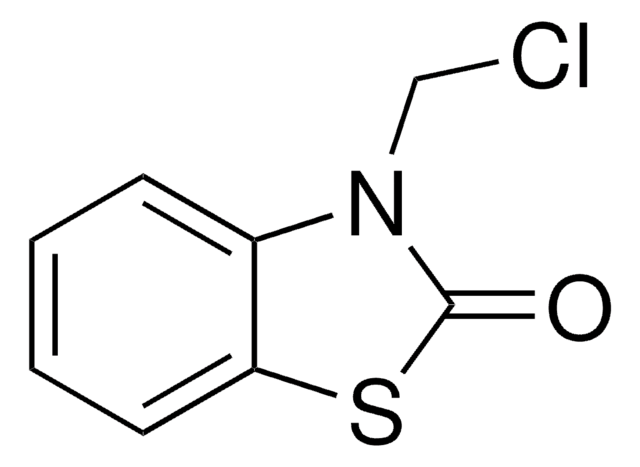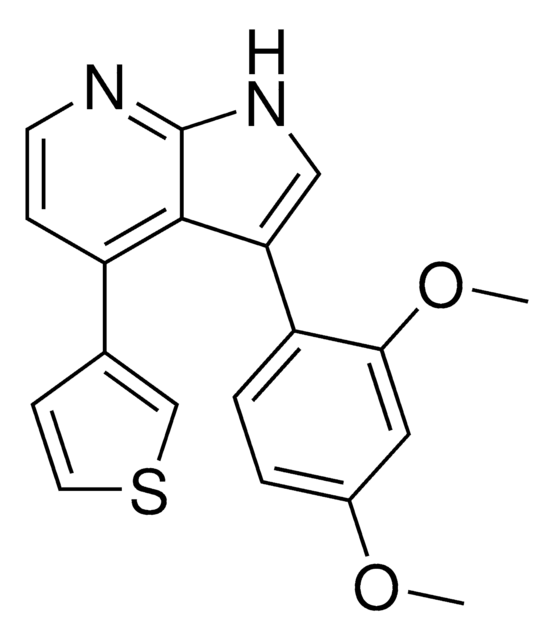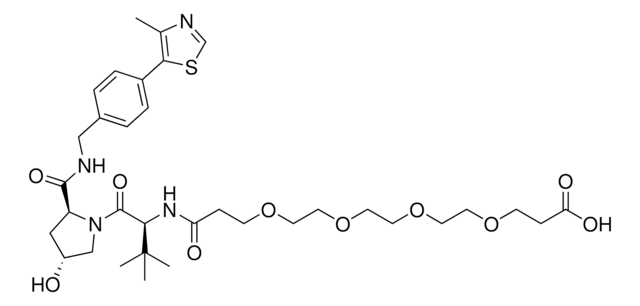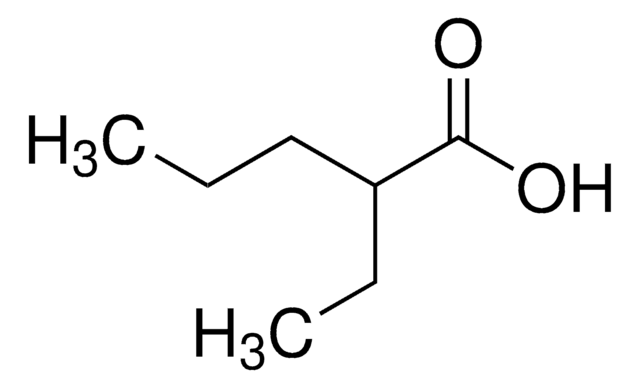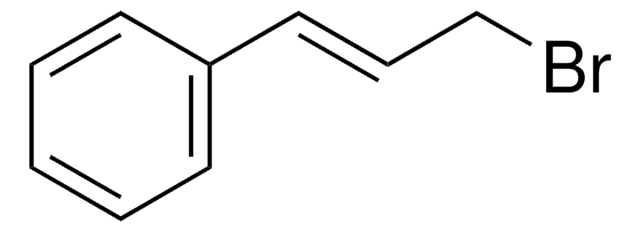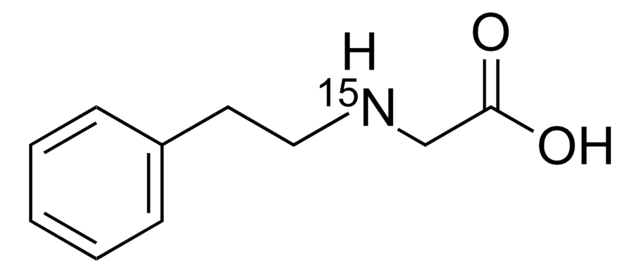Wszystkie zdjęcia(1)
Kluczowe dokumenty
930822
3-[1,3-Dihydro-4-(5-hydroxy-1-pentyn-1-yl)-1-oxo-2H-isoindol-2-yl]-2,6-piperidinedione
≥95.0%
Synonim(y):
2,6-Piperidinedione, 3-[1,3-dihydro-4-(5-hydroxy-1-pentyn-1-yl)-1-oxo-2H-isoindol-2-yl]
Zaloguj sięWyświetlanie cen organizacyjnych i kontraktowych
About This Item
Wzór empiryczny (zapis Hilla):
C18H18N2O4
Numer CAS:
Masa cząsteczkowa:
326.35
Numer MDL:
Kod UNSPSC:
12352101
NACRES:
NA.21
Polecane produkty
Powiązane kategorie
Zastosowanie
3-[1,3-dihydro-4-(5-hydroksy-1-pentyn-1-ylo)-1-okso-2H-izoindol-2-ylo]-2,6-piperydynodion jest funkcjonalizowanym ligandem cereblonu (CRBN) stosowanym w rozwoju bloków budulcowych degraderów białek opartych na lenalidomidzie. Może być aktywowany przez wiele nukleofili lub tworzyć wiązania eterowe poprzez końcową grupę hydroksylową. Podstawowy budulec do opracowania biblioteki degraderów białek.
Technology Spotlight: Bloki konstrukcyjne degraderów do ukierunkowanej degradacji białek
Bloki konstrukcyjne degraderów białek
Technology Spotlight: Bloki konstrukcyjne degraderów do ukierunkowanej degradacji białek
Bloki konstrukcyjne degraderów białek
Inne uwagi
Targeted Protein Degradation by Small Molecules
Destruction of DNA-Binding Proteins by Programmable Oligonucleotide PROTAC (O′PROTAC): Effective Targeting of LEF1 and ERG
Small-Molecule PROTACS: Nowe podejście do degradacji białek
Targeted Protein Degradation: from Chemical Biology to Drug Discovery
Wpływ długości łącznika na aktywność PROTAC
Destruction of DNA-Binding Proteins by Programmable Oligonucleotide PROTAC (O′PROTAC): Effective Targeting of LEF1 and ERG
Small-Molecule PROTACS: Nowe podejście do degradacji białek
Targeted Protein Degradation: from Chemical Biology to Drug Discovery
Wpływ długości łącznika na aktywność PROTAC
Informacje prawne
11779
PROTAC is a registered trademark of Arvinas Operations, Inc., and is used under license
Ta strona może zawierać tekst przetłumaczony maszynowo.
Kod klasy składowania
11 - Combustible Solids
Klasa zagrożenia wodnego (WGK)
WGK 3
Temperatura zapłonu (°F)
Not applicable
Temperatura zapłonu (°C)
Not applicable
Wybierz jedną z najnowszych wersji:
Certyfikaty analizy (CoA)
Lot/Batch Number
Nie widzisz odpowiedniej wersji?
Jeśli potrzebujesz konkretnej wersji, możesz wyszukać konkretny certyfikat według numeru partii lub serii.
Masz już ten produkt?
Dokumenty związane z niedawno zakupionymi produktami zostały zamieszczone w Bibliotece dokumentów.
Jingwei Shao et al.
Advanced science (Weinheim, Baden-Wurttemberg, Germany), 8(20), e2102555-e2102555 (2021-08-17)
DNA-binding proteins, including transcription factors (TFs), play essential roles in various cellular processes and pathogenesis of diseases, deeming to be potential therapeutic targets. However, these proteins are generally considered undruggable as they lack an enzymatic catalytic site or a ligand-binding
Daniel P Bondeson et al.
Annual review of pharmacology and toxicology, 57, 107-123 (2016-10-13)
Protein homeostasis networks are highly regulated systems responsible for maintaining the health and productivity of cells. Whereas therapeutics have been developed to disrupt protein homeostasis, more recently identified techniques have been used to repurpose homeostatic networks to effect degradation of
Kedra Cyrus et al.
Molecular bioSystems, 7(2), 359-364 (2010-10-06)
Conventional genetic approaches have provided a powerful tool in the study of proteins. However, these techniques often preclude selective manipulation of temporal and spatial protein functions, which is crucial for the investigation of dynamic cellular processes. To overcome these limitations
Momar Toure et al.
Angewandte Chemie (International ed. in English), 55(6), 1966-1973 (2016-01-13)
The current inhibitor-based approach to therapeutics has inherent limitations owing to its occupancy-based model: 1) there is a need to maintain high systemic exposure to ensure sufficient in vivo inhibition, 2) high in vivo concentrations bring potential for off-target side effects, and 3) there is
Philipp M Cromm et al.
Cell chemical biology, 24(9), 1181-1190 (2017-06-27)
Traditional pharmaceutical drug discovery is almost exclusively focused on directly controlling protein activity to cure diseases. Modulators of protein activity, especially inhibitors, are developed and applied at high concentration to achieve maximal effects. Thereby, reduced bioavailability and off-target effects can
Nasz zespół naukowców ma doświadczenie we wszystkich obszarach badań, w tym w naukach przyrodniczych, materiałoznawstwie, syntezie chemicznej, chromatografii, analityce i wielu innych dziedzinach.
Skontaktuj się z zespołem ds. pomocy technicznej